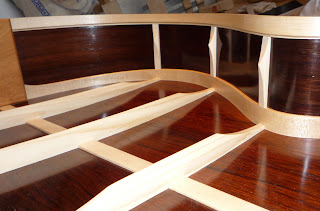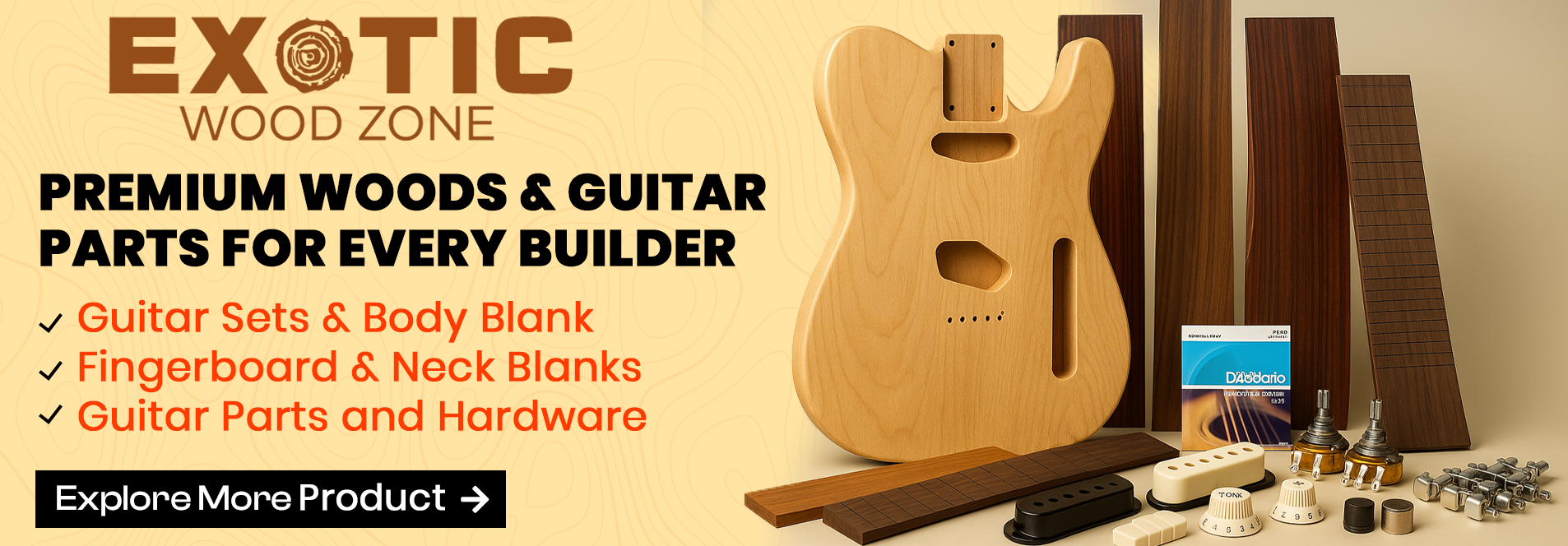Inside surfaces
-
hummingbird
- Posts: 277
- Joined: Thu Nov 11, 2010 11:10 pm
- Location: Ottawa, ON
Inside surfaces
To what grit should I sand the inside surfaces. I've heard John mention that the outside should be sanded to no more than 220 in order to assure proper adhesion of the finish. But what about the inside. Any reason why I can't sand and polish it to a very fine smooth finish? If I do that should I take into account the surfaces onto which the braces will be glued and leave those areas more rough to provide a better glueing surface. Any advice would be appreciated.
Alain
-
Jim_H
- Posts: 506
- Joined: Tue Sep 06, 2011 2:51 pm
- Location: Bothell, WA USA
Re: Inside surfaces
Sounds like you are going for an aesthetic thing. I don't see any reason not to do it. It's going to be difficult to get a 'polish' look on anything with deep pores.
Polishing surfaces that will be getting glue sounds like a bad idea to me.
Polishing surfaces that will be getting glue sounds like a bad idea to me.
My poorly maintained "Blog"
-
Tony_in_NYC
- Posts: 827
- Joined: Thu Aug 12, 2010 9:11 pm
Re: Inside surfaces
I would recommend you glue your braces first, then sand to your heart's content. I sanded the inside of my first guitar to 600 grit before I closed the box. I have never done that since. I stop at 320 now. It looks nice and smooth and well crafted at that point. I don't like the inside of the box to look sloppy, but I am not yet going to the point of putting a wash coat of shellac on the inside like Somogyi. I am certainly never going to do something like this:

That dude French Polishes the INSIDE of his guitars!! Taran Guitars is the company for anyone interested in looking at his work.
Once the braces are glued on you can do anything you want. Just make sure you leave the edge of the back and top plates a bit rough so you can glue them on too.

That dude French Polishes the INSIDE of his guitars!! Taran Guitars is the company for anyone interested in looking at his work.
Once the braces are glued on you can do anything you want. Just make sure you leave the edge of the back and top plates a bit rough so you can glue them on too.
-
Jim_H
- Posts: 506
- Joined: Tue Sep 06, 2011 2:51 pm
- Location: Bothell, WA USA
Re: Inside surfaces
I've noticed in watching videos, that it seems to be popular among classical builders to put a seal coat on the neck and tail blocks before closing the box. I don't see this on steel string builders though...
My poorly maintained "Blog"
-
kencierp
Re: Inside surfaces
Overholtzer recommend and instructed his students to appy a coat of shellac to the sound board and braces before gluing the braces his logic was it prevented warping and or distortion of the parts -- he was a great fan of Titebond glue -- which of course is water based.
-
Jim_H
- Posts: 506
- Joined: Tue Sep 06, 2011 2:51 pm
- Location: Bothell, WA USA
Re: Inside surfaces
Tony_in_NYC wrote:I would recommend you glue your braces first, then sand to your heart's content. I sanded the inside of my first guitar to 600 grit before I closed the box. I have never done that since. I stop at 320 now. It looks nice and smooth and well crafted at that point. I don't like the inside of the box to look sloppy, but I am not yet going to the point of putting a wash coat of shellac on the inside like Somogyi. I am certainly never going to do something like this:
That dude French Polishes the INSIDE of his guitars!! Taran Guitars is the company for anyone interested in looking at his work.
Once the braces are glued on you can do anything you want. Just make sure you leave the edge of the back and top plates a bit rough so you can glue them on too.
Man, if I owned that guitar I'd probably be in the nuthouse. I'd spend every waking moment picking specks of dust out of the inside of it :p
My poorly maintained "Blog"
-
hummingbird
- Posts: 277
- Joined: Thu Nov 11, 2010 11:10 pm
- Location: Ottawa, ON
Re: Inside surfaces
Im just curious if there's some general rule about that. I do however think it would be esthetically pleasing if it were nice and smooth like. I wonder how it would look with just pore filler then sanded fine.
It did occur to me though that the sound waves would reflect better if everything inside was nice and smooth rather than being absorbed by a rough surface. Wouldn't that be beneficial sonically.
It did occur to me though that the sound waves would reflect better if everything inside was nice and smooth rather than being absorbed by a rough surface. Wouldn't that be beneficial sonically.
Alain
-
Oval Soundhole
- Posts: 92
- Joined: Mon Jun 27, 2011 3:33 pm
Re: Inside surfaces
probably not, look inside a vintage gibson: it looks like crap, strum a chord, it sounds fantastic :Dhummingbird wrote:Im just curious if there's some general rule about that. I do however think it would be esthetically pleasing if it were nice and smooth like. I wonder how it would look with just pore filler then sanded fine.
It did occur to me though that the sound waves would reflect better if everything inside was nice and smooth rather than being absorbed by a rough surface. Wouldn't that be beneficial sonically.
Rock over london. Rock on Chicago. Wheaties, breakfast of champions
-
tippie53
- Posts: 7164
- Joined: Fri Mar 03, 2006 7:09 pm
- Location: Hegins, Pa
- Contact:
Re: Inside surfaces
I good scraper will also give you a nice clean look .
John Hall
Blues Creek Guitars Inc
Authorized CF Martin Repair Center
president of Association of Stringed Instrument Artisans
http://www.bluescreekguitars.com
Blues Creek Guitars Inc
Authorized CF Martin Repair Center
president of Association of Stringed Instrument Artisans
http://www.bluescreekguitars.com
-
kencierp
Re: Inside surfaces
It seems the basic question is -- will finishing the inside of a guitar make it a better "musical instrument" --- no. Maybe the coating results will be that the guitar sounds like the echo in a public restroom? Who knows? Will it show that, the maker has a bit more patiance and attention to detail -- perhaps. In the end it would seem the newcomer and most the rest of us should spend our time and treasure to make a "musical instrument" that has a proved pedigree --- (copy one that sounds good to you). To hear the sound of a highly reflective back go play a top of the line Ovation. $.02

